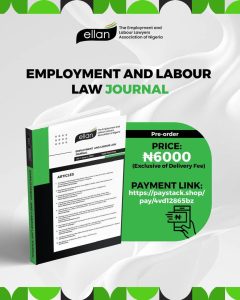By Lawal Ogienagbon
Enacted 45 years ago, the Public Order Act 1979 regulates assemblies, processions and meetings in public places. The essence of the law is to ensure peaceful conduct on such occasions. The Supreme Court has since settled the matter on the propriety or otherwise of such gatherings. Potential protesters are always quick to point at the apex court’s decision which outlawed the practice of obtaining police permit before holding any gathering.
Organisers of the August Protests too fell back on the judgment to justify their plan for the nationwide action. The court’s verdict was simply an interpretation of Section 40 of the 1999 Constitution (as amended), which states:
“Every person shall be entitled to assemble freely and associate with other persons, and in particular he may form or belong to any political party, trade union or any other association for the protection of his interests”
There is a caveat to this provision, which is titled: “Right to peaceful assembly and association”. It says:
“Provided that the provisions of this section shall not derogate from the powers conferred by this Constitution on the Independent National Electoral Commission with respect to political parties to which that Commission does not accord recognition”.
The emphasis on “peaceful” gatherings by the law may be deliberate, apparently because of human nature. The right to protest, like every other right granted by the Constitution, is not absolute. It must be exercised in a manner not to breach the public peace. This was why the public order laws of the respective states were repealed and replaced with the 1979 Federal Act “for the purpose of maintaining public order…”
Section 1 (1) of the law empowers the governor of a state to direct the conduct of any gathering, prescribe the route and time for it. It reads:
“For the purpose of the proper and peaceful conduct of public assemblies, meetings and processions and subject to Section 11 of this Act, the governor of each state is hereby empowered to direct the conduct of all assemblies, meetings and processions on the public roads or places of public resort in the state and prescribe the routes which and the times at which any procession may pass”.
Perhaps, it was in exercise of this power that Lagos State Attorney-General and Commissioner for Justice Lawal Pedro (SAN), acting for the governor, went to court on July 30 and obtained a preemptive interim injuncton restricting the protests in the state to Gani Fawehinmi Freedom Park, Ojota, and the Ketu Peace Park.
The Federal Capital Territory Administration (FCTA) also obtained an order restricting the protest in Abuja to the Moshood Abiola National Stadium.
But in recognising the right to peaceful gatherings, the law warned of the consequences of breaching it in Section 5.
The provisions stipulate:
(1) Any person who at a public assembly, meeting or procession acts in a disorderly manner for the purpose of preventing the transaction of the business for which the assembly, meeting or procession was called or formed shall be guilty of an offence.
(2) Any person who incites others to commit an offence under this section shall be guilty of an offence.
(3): Any person guilty of an offence under this section shall be liable on conviction on a first offence to a fine… or imprisonment; and for a second or any subsequent conviction, to imprisonment for 12 months without an option of a fine.
It also warned in Section 8 against carrying “offensive weapons” during such gatherings to avoid the wrath of the law. The provisions state:
(1) Any person who, while present at any public assembly or meeting, or on the occasion of any public procession, has with him any offensive weapons or missiles, otherwise than in pursuance of lawful authority, shall be guilty of an offence and liable on conviction to imprisonment for 12 months without the option of a fine
(3) In this section, “offensive weapons or missiles” include any cannon, gun, rifle, carbine, machine gun, cap gun, revolver, pistol, air gun, air pistol or other firearms (whether whole or in detached pieces), bow and arrow, spear, cutlass, machete, knife, dagger, axe, cudgel, horsewhip or any piece of wood, metal or other material, or stone capable of being used as an offensive weapon or missile and includes tear gas, corrosive, inflammable substances or any other thing that is capable of being used to inflict or cause injury.
It speaks volumes of the patience of the government that the law was not thrown at the protesters even before the protests started on August 1. They started on a wrong premise by tagging the action: “Days of rage”. By giving it such a tag, they, ab initio, breached the Constitution which mainly grants every citizen the “right to peaceful assembly and association”. Rage is not by any means peaceful. It is a call to arms and violence.

